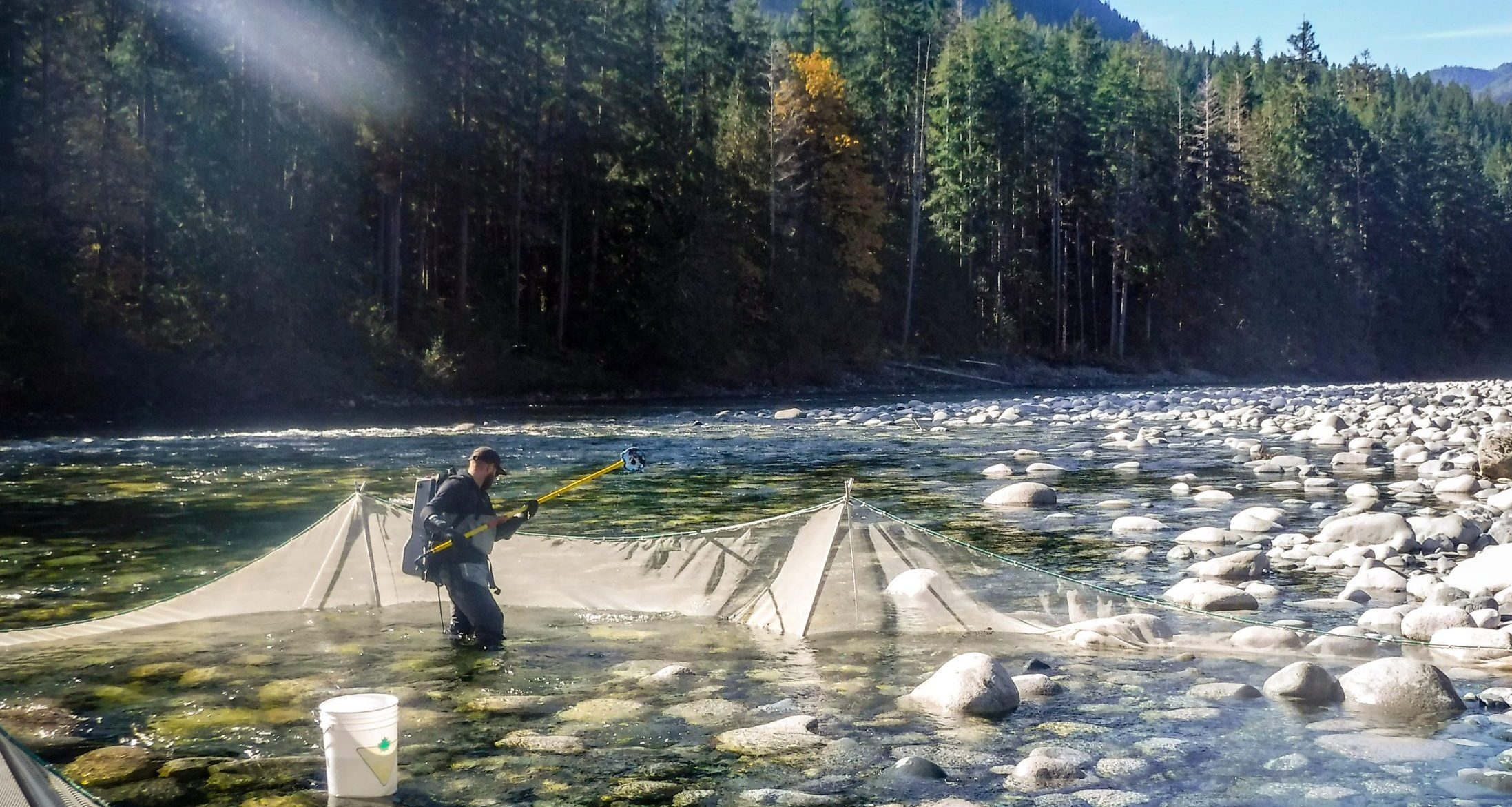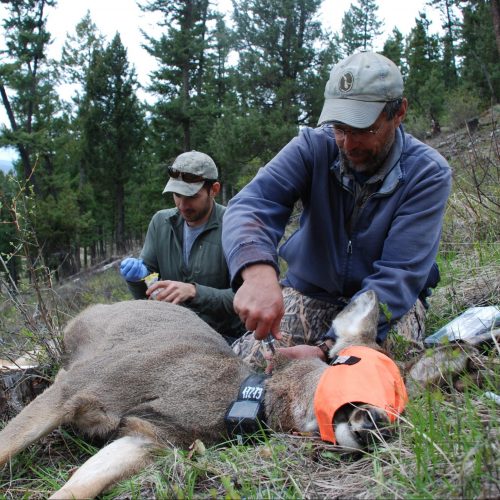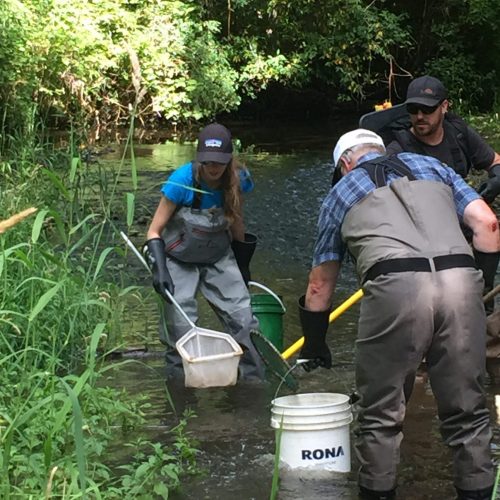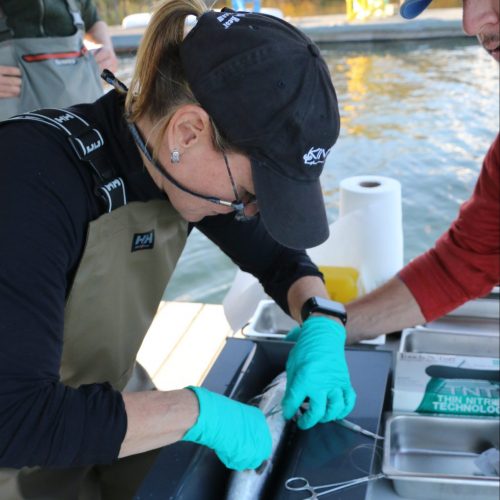In 2021, B.C.’s Ministry of Environment and Climate Change Strategy (MOE) allocated $10 million in funding for ecosystem and species conservation via the Conservation Economic Stimulus Initiative (CESI). As part of B.C.’s Economic Recovery Plan, this new program supported B.C.’s economic recovery by investing in ecosystem and species restoration projects across the province. These projects employed British Columbians, with a focus on demographics such as young adult, women, and Indigenous People who have been disproportionately affected by COVID-19, by funding “shovel ready” conservation projects that also helped to protect and improve B.C.’s diverse ecosystems, wildlife, and freshwater fish species.
For over 40 years the Habitat Conservation Trust Foundation (HCTF) has awarded $205 million in funding to conservation organizations practicing science-based habitat, wildlife, and fish management techniques across B.C. In these unprecedented times, HCTF was proud to bhave partnered with the Province to bring further funding to the conservation field, assisting with economic recovery efforts while also improving and securing B.C.’s important natural assets.
Appreciation for our wild places, diverse wildlife species, and abundant fisheries is a value held by all British Columbians; the Conservation Economic Stimulus Initiative will keep this love for BC wilderness in the forefront even as our province continues recovering from the effects of the global COVID-19 pandemic.
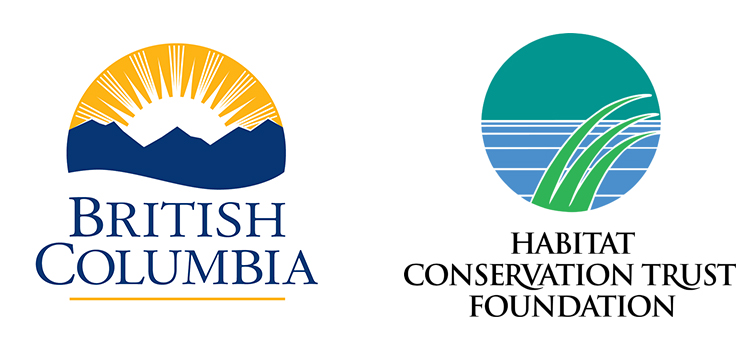

Frequently Asked Questions
- What is the Conservation Economic Stimulus Initiative?
The Conservation Economic Stimulus Initiative describes $10M in stimulus funding provided by the Province and administered by HCTF. Funding was allocated to wildlife species and ecosystem restoration and conservation activities as part of the Province’s economic recovery plan.
- What is the purpose of the Conservation Economic Stimulus Initiative?
The purpose of this project is to support economic recovery and stimulus, promote healthy ecosystems through conservation and restoration activities, and support the advancement of the United Nations Declaration on the Rights of Indigenous Peoples (UNDRIP) implementation.
- What types of projects were funded?
Funding provided by the Conservation Economic Stimulus Initiative was used to enable conservation work to restore and support natural spaces impacted by climate change, urbanization, industrial and resource development. This includes activities such as monitoring waterflows, tracking species, and restoring ecosystems through replanting native flora, amongst other initiatives.
- Who was the funding awarded to?
Recipients of Conservation Economic Stimulus Initiative funding were “shovel-ready” conservation projects (i.e. able to begin work quickly) and to be completed by December 2021. These projects must meet the following criteria:
- Provide immediate job creation for vulnerable communities most impacted by COVID-19, including women, young adult, and Indigenous People across the province
- Has links to climate mitigation or adaptation benefits
- Supports Indigenous reconciliation
- All projects must also abide by current COVID-19 health and safety requirements
- What was the Habitat Conservation Trust Foundation’s role in this initiative?
The Habitat Conservation Trust Foundation (HCTF) was responsible for administering the Conservation Economic Stimulus Initiative funds, including providing grants to partner organizations for species and ecosystem conservation projects. HCTF worked closely with successful grant recipients to manage contracts, payments, and reporting on the conservation and economic outcomes of their projects.
- Why was HCTF selected to administer the Conservation Economic Stimulus Initiative?
HCTF was selected to manage funding for the Conservation Economic Stimulus Initiative based upon the organization’s record of excellence in science-based conservation project assessment, financial management, and funding administration.
- How did this initiative differ from HCTF’s existing funding programs?
The Conservation Economic Stimulus Initiative differs from HCTF’s other granting streams in that a priority was placed on economic and employment recovery within the conservation field and among demographics disproportionately affected by the COVID-19 pandemic. To generate employment opportunities as quickly as possible, projects were selected from a list of projects that had already been reviewed and recommended by the Ministry of Environment and Climate Change Strategy and Ministry of Forests, Lands, Natural Resource Operations, and Rural Development. HCTF also reviewed each individual project to ensure compliance with the HCTF Trust Purposes. Following the selection process, HCTF led all aspects of grant administration, funding management, and project coordination similarly to other HCTF programs. Please note that due to the program’s unique goals and requirements, reporting and other administrative procedures will differ from HCTF’s existing funding programs.
- How were projects selected for funding through the Conservation Economic Stimulus Initiative?
The Province undertook an internal call for shovel-ready projects that met the Province’s conservation and employment economic criteria. Through a further feasibility process, including feedback from HCTF, this list was then narrowed down to approximately 70 projects. Project leaders have now been contacted regarding their initiatives and the potential for grants to support that work
- Can I apply for Conservation Economic Stimulus Initiative funding?
There are no opportunities to apply at this time, as all available funding has been allocated and the program now complete. However, HCTF welcomes anyone with a good idea that benefits fish, wildlife, or habitats to apply through any of our other granting streams.






